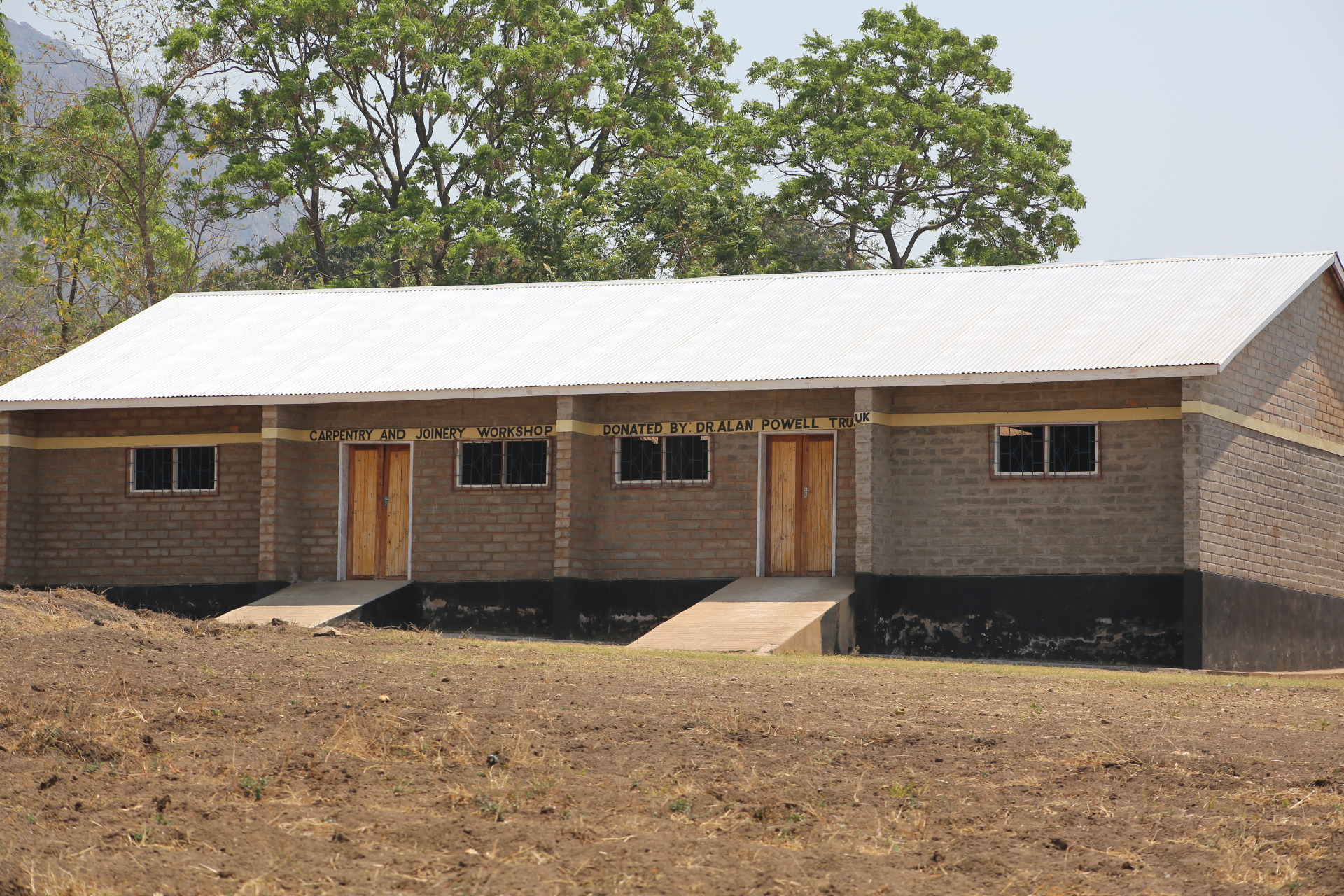Malawi is a small, landlocked country in south eastern Africa bordered by Zimbabwe, Zambia, Mozambique and Tanzania. It is one of the poorest countries in the world. About 85% of its approximately 16 million inhabitants live in rural areas; the latest income poverty survey showed that rural poverty has increased in the last decade to 57% of the rural population. Malawi ranks at 170 out of 187 countries on the Human Development Index (as of 2013), a measure which seeks to summarise three key aspects of human development: a long and healthy life, being knowledgeable and having a decent standard of living.

Image: The Malawian flag
Malawi is a largely agricultural nation, with most Malawians relying upon subsistence farming. The food supply is vulnerable to natural disasters: both droughts and severe rainfall, the latter striking most severely in recent times in early 2015, and greatly affected food prices and availibility. Rapid population growth - 45% of the population is younger than 14 - together with pollution have further increased the difficulty of farming.
Image: Lake Malawi.
It marks much of Malawi's eastern border, the other side of the country to Home of Hope.
Malawi is affectionately known as the ‘warm heart of Africa’. Around 20% of its surface area is covered by Lake Malawi, which is the ninth largest in the world and has the more species of fish than any other. The capital of Malawi is Lilongwe. Chichewa and English are the two main languages spoken and the local currency is the Malawian Kwacha.
Health
The HIV/AIDS epidemic affects much of the developing world, particularly Southern Africa. Although its prevalence in Malawi has decreased since 1999, it continues to significantly shape Malawian society. It is estimated that 1 million Malawians currently live with HIV, and AIDS has led to around 530,000 orphans aged 0-17. Working age adults care and provide for both children and the elderly in Malawi. However, it is working age adults that have been most affected by HIV/AIDS, with a prevalence rate of 1 in 11 for those aged 15-49. This has led to grandparents struggling to provide both for themselves and increasing numbers of orphaned grandchildren.
Other diseases are also significant, most notably malaria, which accounted for around 9,500 deaths in 2012. Whilst the number of deaths caused by HIV, TB and malaria fell significantly between 2000 and 2012, they still form by far the largest broad cause group. Adequate sanitation in rural areas is also a major issue, with only 20% of people having access to a toilet.
Child Poverty
In August 2016 UNICEF published the first ever Malawi Child Poverty report which found that sixty-three per cent of Malawi’s children are deprived of basic needs such as education, health, nutrition, water, sanitation, shelter and information. The most vulnerable represent one third of all children in Malawi. To read more go to http://www.unicef.org/malawi/
This context highlights how valuable the work of Home of Hope is, particularly that of the Outreach Scheme in supporting the local rural community.
Orphans in Malawi
As for much of the developing world, maternal mortality is a significant challenge. In Malawi the lifetime probability of maternal mortality is 1 in 34; for a woman in the UK it is 1 in 6,900. Fathers often find it difficult to care for a newborn alone. Traditionally, the child's extended family has usually taken the orphaned children in and cared for them.

Image: Primary School children at Home of Hope
The Malawian government's policy is that children should be raised in their own communities, with institutionalisation as a last resort. As of 2014 there was no current data on the number of institutions caring for children in Malawi; in 2010 over 4000 orphans were cared for in institutions. Home of Hope cooperates extensively with the Malawian authorities to ensure that the children we care for are genuine orphans whose families are unable to care for them. Home of Hope provides a loving environment where children are educated and raised to their full potential.
Education
The Malawian education system is based on the British system - Malawi gained independence from the United Kingdom in 1964. Children enter Primary School (Standards 1-8), and then Secondary School (Forms 1-4). Primary education is not compulsory, but the Constitution requires all children to be entitled to 5 years of primary education. The establishment of free primary education in 1994 by the government did much to improve attendance. In 2014 the completion rate for primary education lay at 80%, with lower rates among the poorest and orphans. Home of Hope provides education from Nursery to Secondary levels, and works to support further education, most notably in the development of a Vocational Training Centre.

Image: Alan Powell Carpentry and Joinery Workshop recently constructed at the Home of Hope
Mchinji
Home of Hope is in Mchinji, a district in the Central Region located around 100km west of Lilongwe and close to the Zambian border. Mchinji Boma is the district capital, around 30 minutes from Home of Hope by road. The region is largely agricultural, with groundnuts, tobacco, soya and casava beans being the primary cash crops, whilst maize, yams, velvet beans and pumpkin are prominent food crops. The region is over 1000m above sea level, with a set of hills running north of Mchinji Boma.

Image: Maize ready to be sorted outside at Home of Hope
Sources
- UN Development Program http://www.mw.undp.org/content/malawi/en/home/countryinfo/
- UK Department for International Development http://devtracker.dfid.gov.uk/countries/MW/
- UNAIDS http://www.unaids.org/en/regionscountries/countries/malawi
- World Bank http://wdi.worldbank.org/
- WaterAid UK http://www.wateraid.org/uk/where-we-work/page/malawi
- Wikipedia https://en.wikipedia.org/wiki/Malawi
